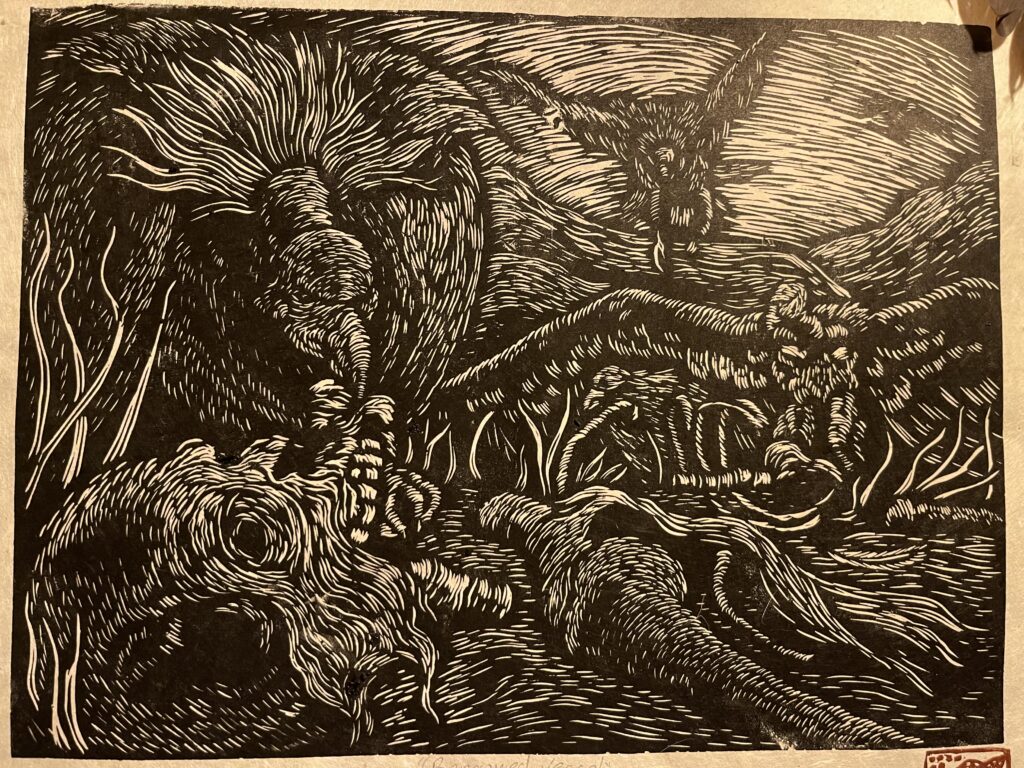
I was first exposed to printmaking at Chico State while studying computer animation and video game development. I was in that environment for a long time. I didn’t really question what I was doing until an art teacher asked me, Are you sure computers are your passion? Because it’s a very sedentary lifestyle; I felt like I wasn’t really connecting with my work, having to translate ideas through a keyboard & screen. The few art classes I did take gave me a sense of accomplishment, because each week I was taking something home I created with my hands. It’s a whole different feeling, knowing what you’re holding is 1-of-1, made by you in a single movement. So much more surreal than a file export. I think anyone could look at my work from that time and tell I wasn’t really giving my major my all.
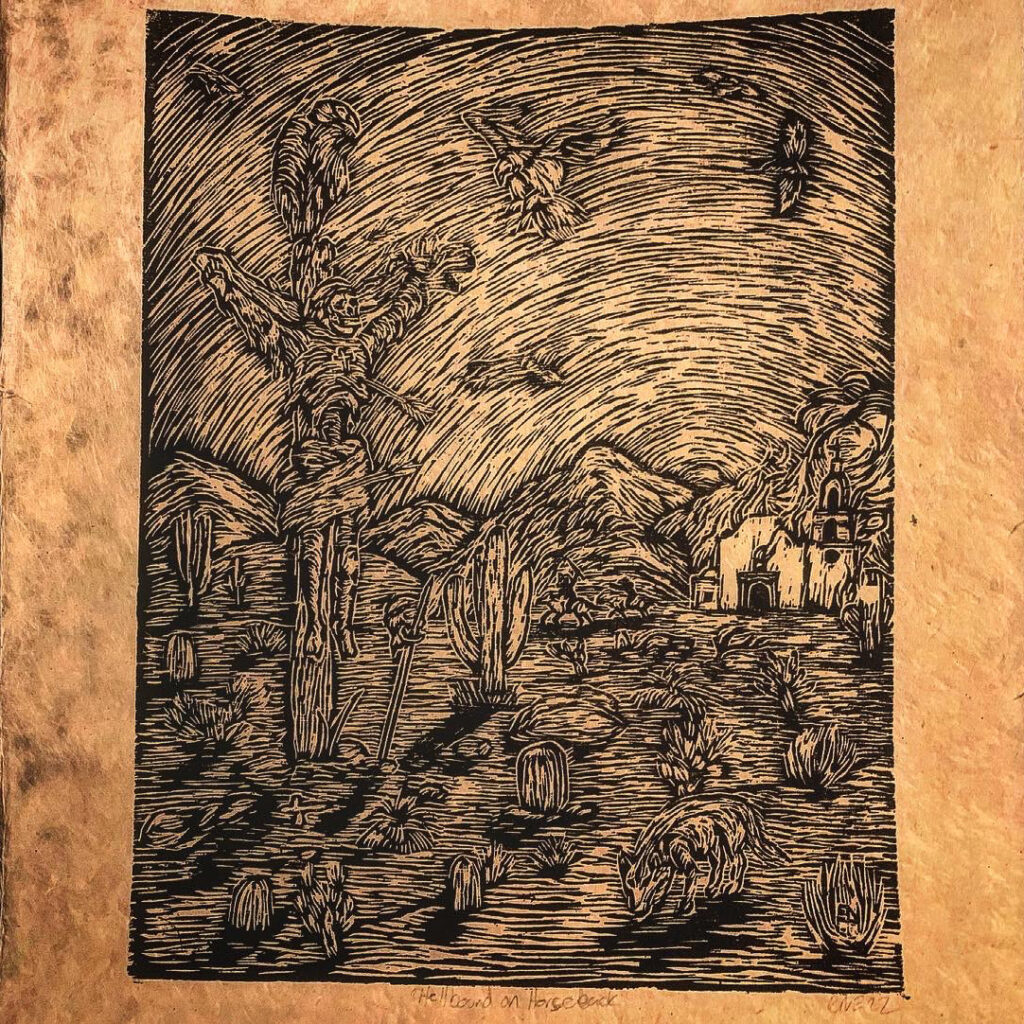
At the time I was going through a bit of an identity crisis, struggling with art and whatnot. I took an ancient Mexican folk art class that shed light on my Indigenous roots, which so many of us don’t recognize. I came across all these folk artists documenting Indigenous struggles and revolutionaries, preserved hundreds of years down the line… I resonated with what I was being exposed to, from creatives long since passed. I asked my family about our roots and turns out my grandmother spoke fluent Mixtec. Thinking that I was a generation away from this lineage, art & printmaking just made sense.
My formative years were actually spent in Catholic school. There was always this disconnect with what I was being taught, I was very riled up in class. Looking back, I knew by instinct I wasn’t supposed to embrace that path. My father told me he was ashamed of being from a tribe growing up in Oaxaca. They’d ridicule him & his mom for not speaking proper Spanish, so the whole family changed their way of life to conform. I wanted to embrace our roots again, to be proud of where we came from. Art has also been a way to converse with my dad it’s not shameful to be of Indigenous descent – every one of us from Turtle Island comes from a rich history of artists, artisans, craftsmakers… I feel like, in a way, printmaking for me has been a journey to adopt and embrace these customs through a modern lens. I like to think I am honoring my ancestors and my family through my work.

There’s a heavy black metal, iconoclastic, retaliating aesthetic to what I create. Super blasphemous. A big initial inspiration was a documentary on Franciscan priests and how they treated their prisoners; throwing codices and cultural artifacts into fires, burning resistors alive… Not long after watching that, I came across an old Bible in a thrift store. I thought about printing on the pages to repurpose the text, to give it a new meaning. I want to bring stories of Indigenous retaliation and symbols of ancient Meso, North, Central, & South America to the forefront. I weave a lot of narratives into my work.
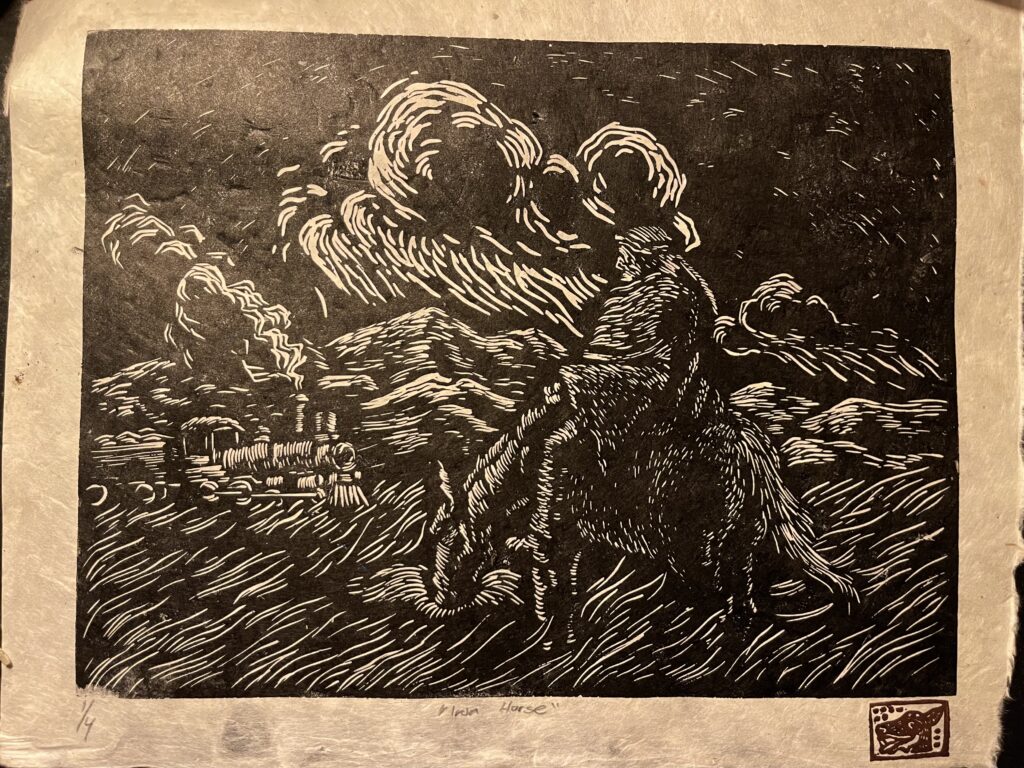

Music and art are huge sources of inspiration for me. I’m thinking about a whole world when I create.
I think what really sprung my creative interest was getting all these tattoos <haha>. Medieval art styles first drew me in; the line work, and positive-negative space relationships. That and metal album covers, all the religious iconography and distortion.

I’ve been grateful to receive commissions from like-minded people. The band Wayfarer – when they released their album A Romance with Violence four years ago, it became pivotal to the work I create now. It’s a breaking down of the American West; critiquing it to uplift Native experiences. I love Westerns, but we also have to air out the ‘Cowboy & Indian’ myths we’ve been told to break down what really happened. It wasn’t until the release of American Gothic that they saw my message explaining their significance to me, and they reached out to collaborate on a T-shirt. There were themes of oil barons and destruction of land, so we did a piece with black blood coming from the earth. We also did a reaper coming out of an oil rig.
I’ve also done work for Tzompantli & Xibalba; I connected with them through Brian (in both bands). I did two shirt designs for Tzompantli first and, the groups being synonymous with each other, got the call to work with Xibalba soon after.
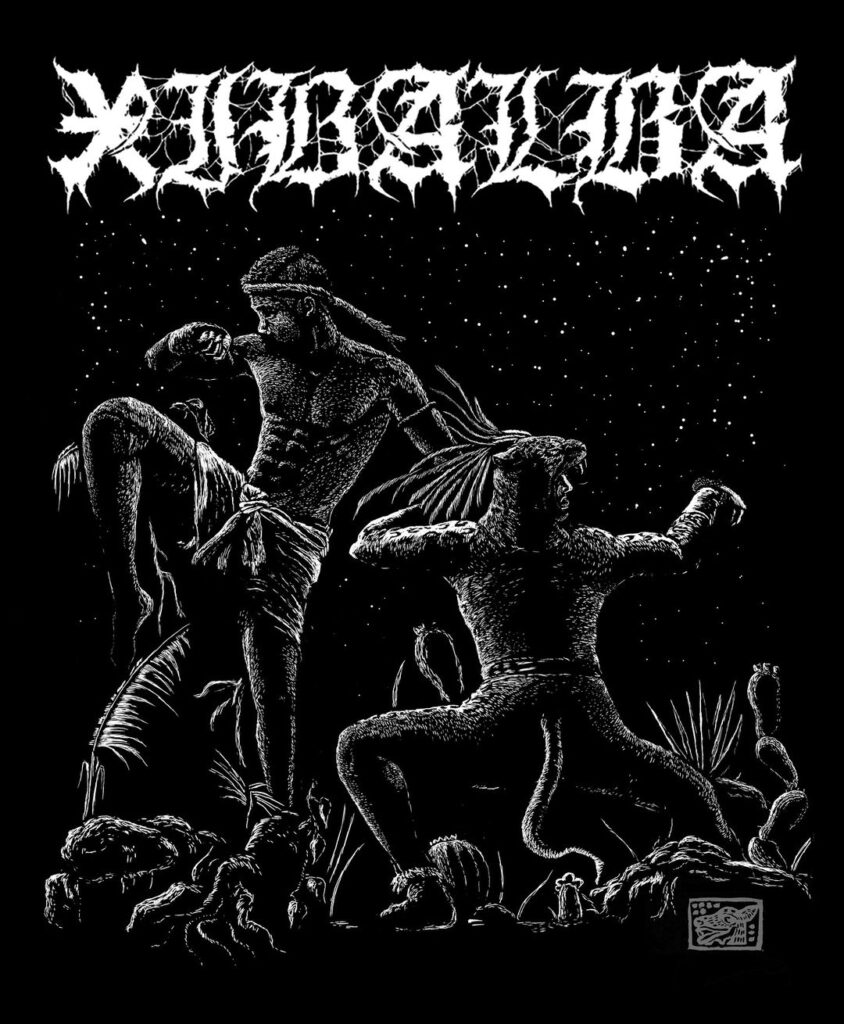
Between all these artists who carry Indigeneity in their blood or consciousness, there’s a strong sense of identity & passion in reclamation. All of us are working to embrace, repair, and nurture our roots.
Working with bands and collaboration in general has been integral to my journey. So many of us on this path come from different cultures; I’ve learned a lot about pre-Columbian languages & customs from all over the Americas. All of these connections arose through this circle of creativity, from following our passions, in a kind of new-wave oral tradition.
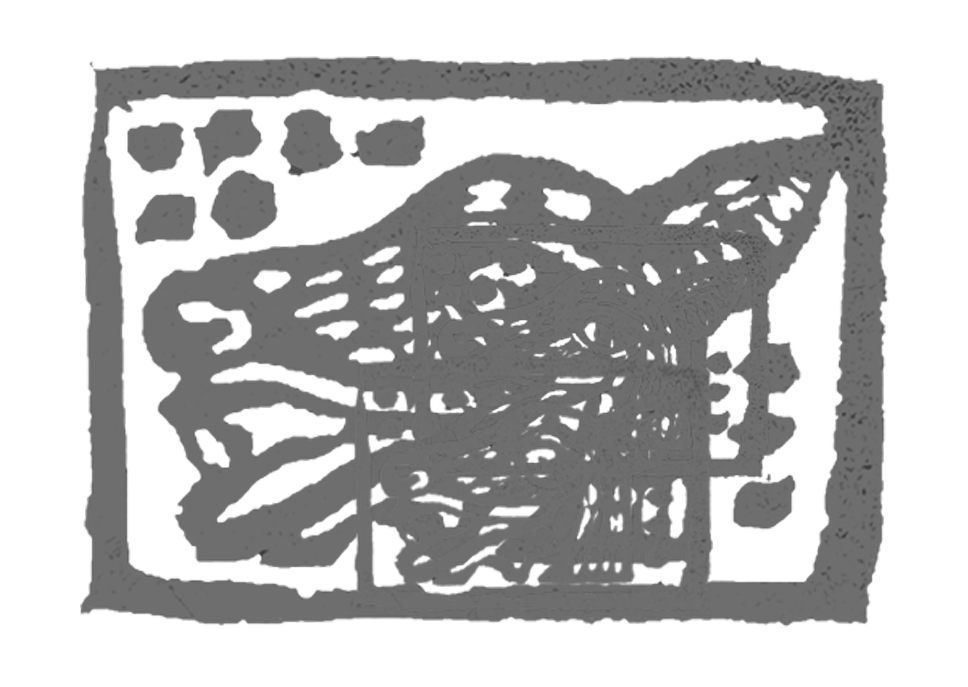
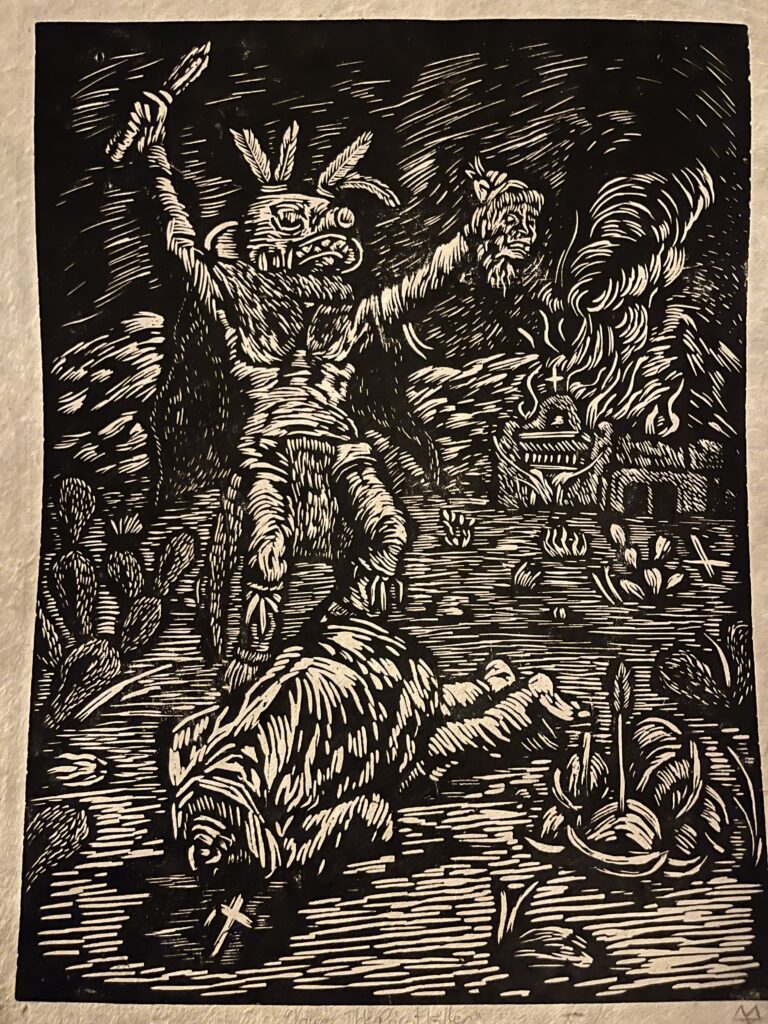
I remember when I was in school, I did a piece of an angel being torn apart. When showcasing, someone took a step back from my piece looking shocked. He said he didn’t know how to feel. Another time recently at the Seaside Artist Expo, a lady held my burning mission piece while shaking, saying it made her uncomfortable. I’ve gotten some pretty gnarly reactions. But these are good things – so much of what’s being created today doesn’t incite any reaction, much less the important ones. Art as a harbinger of change, in any culture, is integral to moving forward.